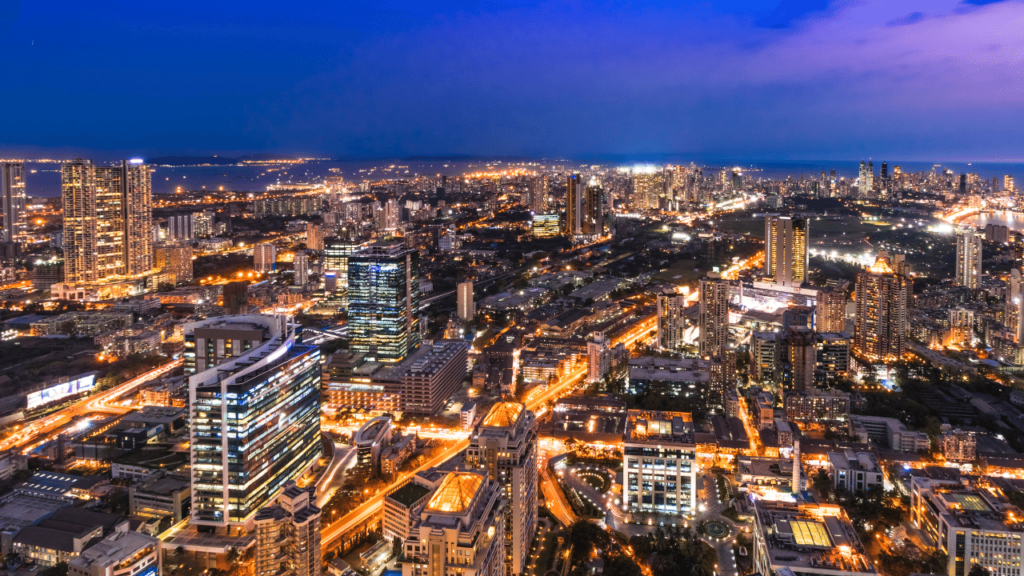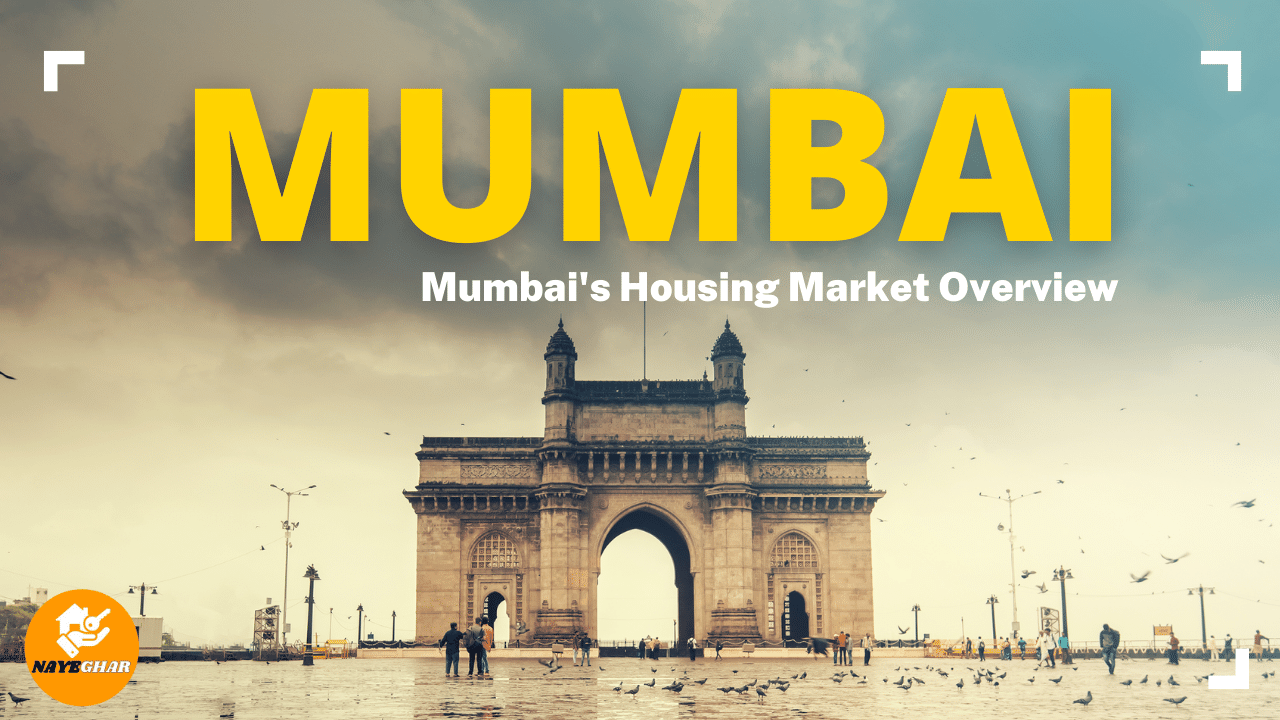Introduction
Mumbai, the financial capital of India, has long been known for its dynamic and robust real estate market. As one of the most populous and densely populated cities in the world, the demand for housing in Mumbai has always been high. In this blog post, we will take a closer look at the current state of the Mumbai housing market and analyze the key trends and developments. Mumbai, often referred to as the “City of Dreams,” is not only the financial capital of India but also one of the most complex and dynamic real estate markets in the country. The city’s housing market is characterized by its diversity, high demand, and equally high prices, driven by a combination of historical significance, economic opportunities, and demographic trends. This blog provides a comprehensive overview of Mumbai’s housing market, exploring its structure, key trends, challenges, and future prospects.

Prices and Affordability
The Mumbai housing market has experienced a steady increase in property prices over the past few years. The average price of a residential property in the city currently stands at around ₹72,000 per square foot, with prime locations like South Mumbai and the financial district commanding even higher rates.
However, the rise in prices has outpaced the growth in incomes, making housing increasingly unaffordable for a large segment of the population. The average home price in Mumbai is now about 8-10 times the annual household income, making it one of the least affordable housing markets in the country.

Demand and Supply Dynamics
The demand for housing in Mumbai remains strong, driven by the influx of job seekers, professionals, and investors. The city’s population has been growing at a rapid pace, further exacerbating the housing shortage.
On the supply side, the construction of new residential units has been constrained by factors such as land scarcity, regulatory hurdles, and rising construction costs. This mismatch between demand and supply has put upward pressure on property prices, making it increasingly difficult for first-time homebuyers to enter the market.
Rental Market
The rental market in Mumbai is equally dynamic, with high demand from both residential and commercial tenants. The average rental yield in the city currently stands at around 2-3% per annum, making it an attractive investment option for those looking to capitalize on the city’s real estate potential.
Emerging Trends
One of the key trends in the Mumbai housing market is the increasing focus on affordable and mid-range housing. Developers are now catering to the growing demand for smaller, more affordable units, particularly in the suburbs and satellite towns. Additionally, the rise of co-living spaces and rental housing options is also gaining traction in the city.
Another emerging trend is the growing interest in sustainable and eco-friendly housing. Developers are now incorporating green building practices and technologies, such as solar panels, rainwater harvesting, and energy-efficient appliances, into their projects.

Market Segmentation
Mumbai’s housing market can be broadly segmented into various categories:
- Luxury Housing: This segment includes high-end properties located in prime areas such as South Mumbai (Colaba, Marine Drive, Malabar Hill) and new affluent neighborhoods like Bandra and Worli. These properties often feature state-of-the-art amenities, panoramic views, and are priced in crores (millions) of rupees.
- Mid-Range Housing: Mid-range properties cater to the upper-middle and middle class and are located in suburban areas such as Andheri, Powai, and Goregaon. These properties offer a balance between affordability and quality, attracting professionals and families.
- Affordable Housing: Affordable housing targets the lower-middle-class population and is primarily situated in peripheral areas like Navi Mumbai, Thane, and beyond. These projects are crucial for addressing the housing needs of the city’s workforce.
- Slum Rehabilitation and Low-Income Housing: A significant portion of Mumbai’s population lives in slums, with Dharavi being one of the largest. Government and private initiatives for slum rehabilitation and low-income housing aim to provide better living conditions for these residents.
Key Trends
Several key trends have shaped Mumbai’s housing market in recent years:
- Vertical Growth: Given the limited availability of land, Mumbai’s housing market has increasingly moved towards vertical growth. High-rise residential towers have become common, maximizing the use of scarce land resources.
- Redevelopment Projects: Redevelopment of old buildings and chawls (traditional tenement housing) is a prominent trend. Projects like the Dharavi Redevelopment Plan aim to transform these areas into modern residential zones, improving living conditions and optimizing space.
- Smart and Sustainable Living: There is a growing emphasis on smart homes and sustainable living. Developers are incorporating green building practices, energy-efficient systems, and digital amenities to cater to the tech-savvy and environmentally conscious population.
- Infrastructure Development: Major infrastructure projects such as the Mumbai Metro, Coastal Road, and Mumbai Trans-Harbour Link are expected to significantly impact the housing market by improving connectivity and reducing travel time, thus increasing the attractiveness of peripheral areas.
Challenges
Despite its growth and dynamism, Mumbai’s housing market faces several challenges:
- High Property Prices: Mumbai is one of the most expensive real estate markets in India. High land costs and demand-supply imbalances drive property prices, making it difficult for many to afford housing in the city.
- Land Scarcity: The city’s geographical constraints limit the availability of developable land, pushing developers towards vertical expansion and redevelopment projects.
- Regulatory Hurdles: Complex regulatory processes and delays in approvals can slow down the pace of new projects, impacting the overall supply of housing.
- Infrastructure Strain: Rapid urbanization has put immense pressure on Mumbai’s infrastructure. Issues such as traffic congestion, inadequate public transport, and insufficient water supply affect the quality of life and the housing market.
- Slum Rehabilitation: Despite numerous initiatives, slum rehabilitation remains a challenging task due to issues like land ownership disputes, resident resistance, and inadequate compensation.
Future Prospects
The future of Mumbai’s housing market looks promising, driven by several positive factors:
- Infrastructure Improvements: Ongoing and planned infrastructure projects are expected to enhance connectivity and accessibility, making peripheral areas more attractive for residential development.
- Government Initiatives: Policies like the Pradhan Mantri Awas Yojana (PMAY) aim to promote affordable housing, while regulatory reforms under the Real Estate (Regulation and Development) Act (RERA) seek to bring transparency and efficiency to the market.
- Technological Advancements: The adoption of technology in real estate development and management is likely to streamline processes, reduce costs, and improve the overall buying experience for consumers.
- Sustainable Development: With increasing awareness of environmental issues, the emphasis on sustainable and green building practices is expected to grow, catering to the eco-conscious segment of the population.
- Investment Opportunities: Mumbai continues to attract real estate investors, both domestic and international, due to its status as a financial hub and its potential for high returns.

Conclusion
Mumbai’s housing market is a microcosm of the city itself—dynamic, diverse, and full of contrasts. From luxury high-rises to sprawling slums, the market reflects the economic disparities and the relentless pace of urbanization. While challenges persist, ongoing infrastructure projects, regulatory reforms, and a focus on sustainable development offer hope for a more balanced and inclusive housing market in the future. As Mumbai continues to evolve, its real estate sector will undoubtedly play a crucial role in shaping the city’s growth and ensuring that it remains a vibrant, livable metropolis.
The Mumbai housing market continues to be a complex and challenging landscape, with both opportunities and challenges for homebuyers, investors, and developers. As the city continues to evolve and adapt to the changing economic and demographic landscape, the real estate sector will likely undergo further transformations in the years to come.
FAQs: Mumbai’s Housing Market Overview
Q1. What is the current average property price in Mumbai?
A: The current average property price in Mumbai stands at around ₹72,000 per square foot, with prime locations like South Mumbai and the financial district commanding even higher rates.
Q2. How affordable is housing in Mumbai?
A: Housing in Mumbai has become increasingly unaffordable, with the average home price now about 8-10 times the annual household income, making it one of the least affordable housing markets in the country.
Q3. What are the key factors driving the demand for housing in Mumbai?
A: The demand for housing in Mumbai is primarily driven by the influx of job seekers, professionals, and investors, as well as the city’s growing population.
Q4. What are the main supply-side challenges in the Mumbai housing market?
A: The key supply-side challenges include land scarcity, regulatory hurdles, and rising construction costs, which have constrained the construction of new residential units.
Q5. What is the current rental yield in the Mumbai housing market?
A: The average rental yield in the Mumbai housing market currently stands at around 2-3% per annum.
Q6. What are the emerging trends in the Mumbai housing market?
A: Some of the emerging trends include a focus on affordable and mid-range housing, the rise of co-living spaces and rental housing options, and the growing interest in sustainable and eco-friendly housing.
Q7. How is the Mumbai housing market expected to evolve in the future?
A: As the city continues to evolve and adapt to the changing economic and demographic landscape, the real estate sector in Mumbai is likely to undergo further transformations in the years to come.





